Redwings and Waxwings
There is something really magical about finding a beautiful songbird eating the berries in your holly tree knowing this bird has recently flown over a thousand miles to visit your garden. For the past ten days three redwings have made our holly tree their home.
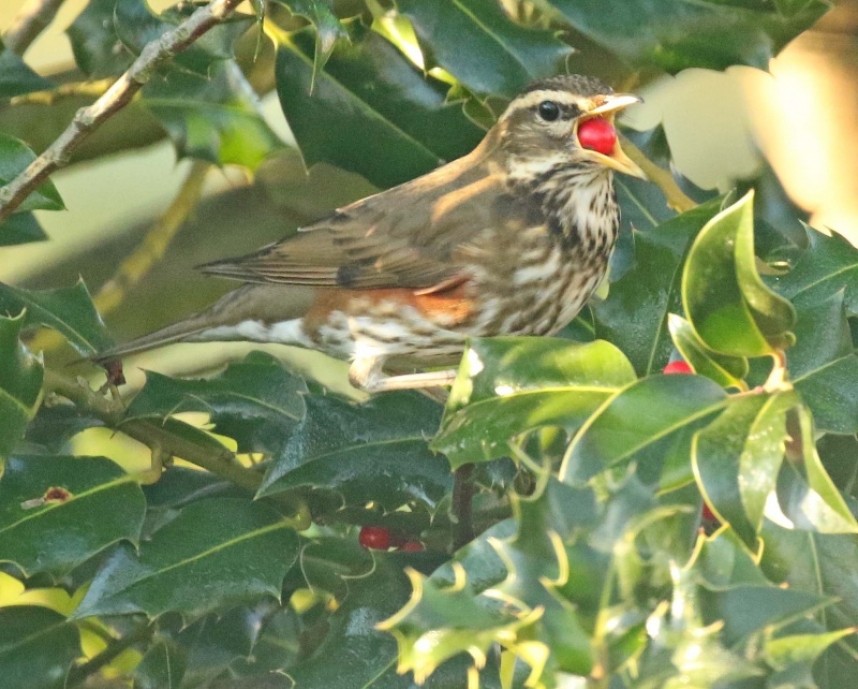
Redwing in York 2020 © Richard Baines
It has been fascinating to watch their feeding behaviour. They sit deep in the tree in a dark corner, watching for danger or competitors or just simply preening and digesting their fruit salad! Just occasionally one will venture along a branch, choosing the area carefully before swallowing a few berries. Then it’s back into the safer haven deep in the tree.
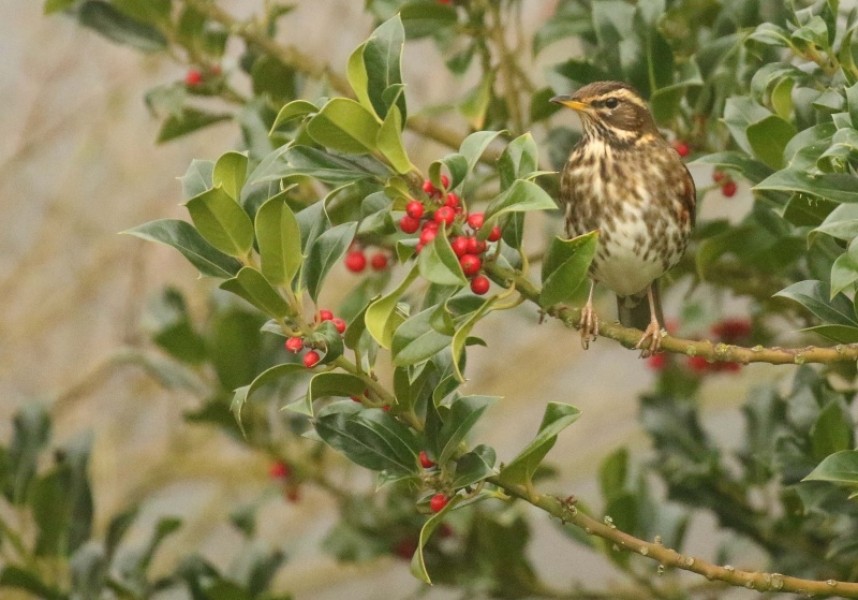
Redwing in York 2020 © Richard Baines
Meanwhile over in Scarborough a flock of Bohemian waxwings have been keeping Yorkshire Coast Nature photographer Steve Race and other birders very happy with their gregarious behaviour. Waxwing feeding style is so different from our secretive redwings.
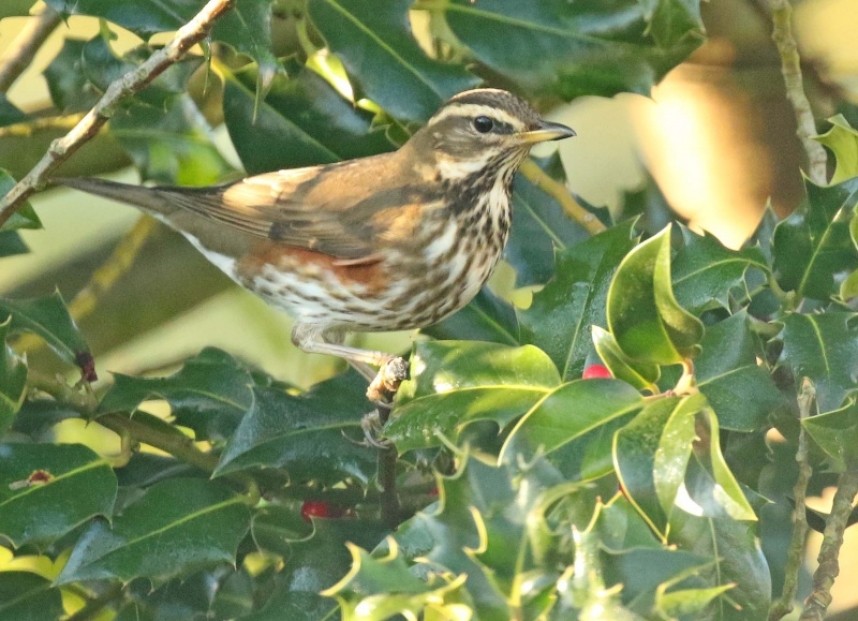
Redwing in York 2020 © Richard Baines
A tasty berry bush is targeted, often an ornamental rowan. The waxwing flock feed together, strip the tree of its fruit as quickly as possible then move on. A research study in Finland found waxwings removed the berries at the top of the trees first. Maybe this is their way of staying safe at the top before moving lower down in the tree.
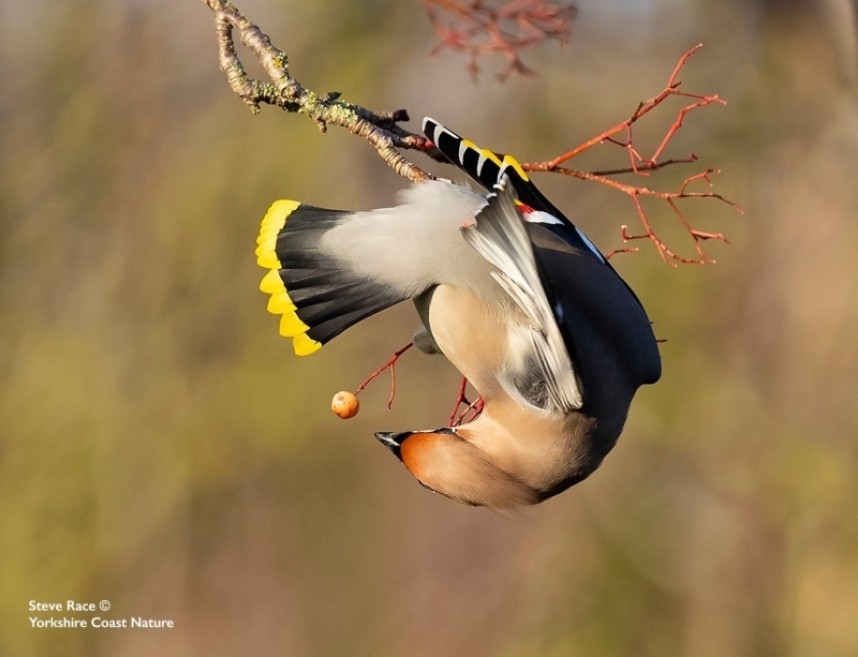
Waxwing in Scarborough 2019 © Steve Race
Redwings and waxwings nest in the vast boreal forests of Scandinavia and Russia. Ringing recoveries suggest many of our redwings originate from the north-eastern Baltic countries. The majority of birds recovered in the UK have been found to be in their first year. Ringing studies on waxwings in the UK have indicated a variety of ages are represented in the flocks.
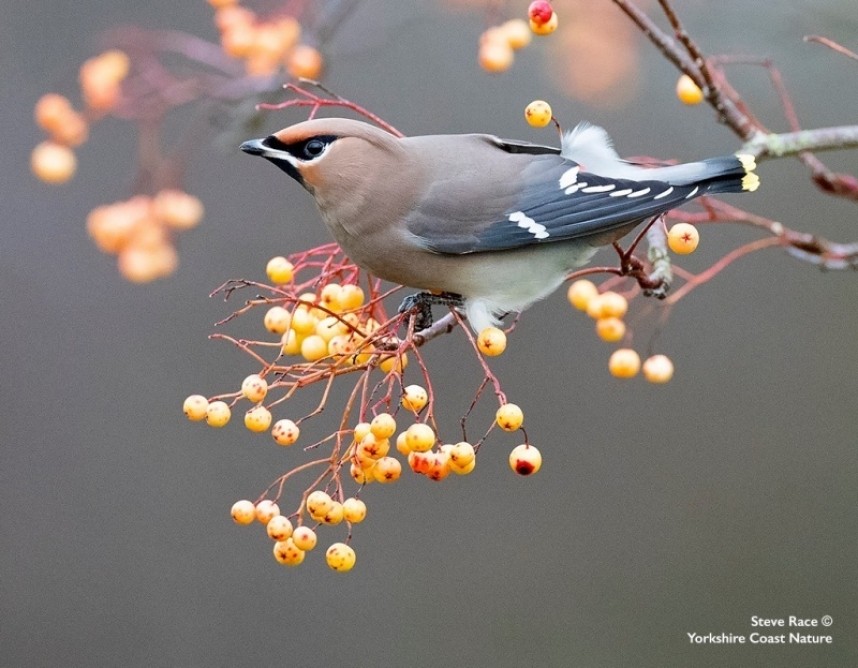
Waxwing in Scarborough 2019 © Steve Race
We are having a bumper winter for redwings in North and East Yorkshire. Look out for them almost anywhere there are winter berries, they seem to prefer native trees such as hawthorn and holly. They will also feed on invertebrates in the soil in the same way as many other thrushes.
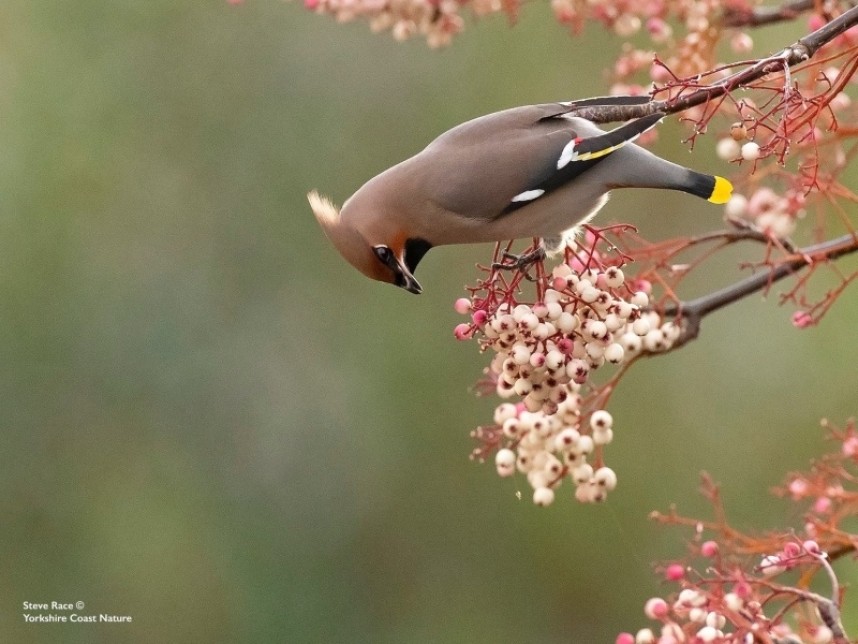
Waxwing in Scarborough 2019 © Steve Race
There are far fewer waxwings in Yorkshire. Scarborough however, has had a great winter for these enigmatic birds. Look out for them in January as they move further inland having devoured every rowan berry on the seaside.
Richard Baines
Yorkshire Coast Nature



 Back to Blog
Back to Blog
